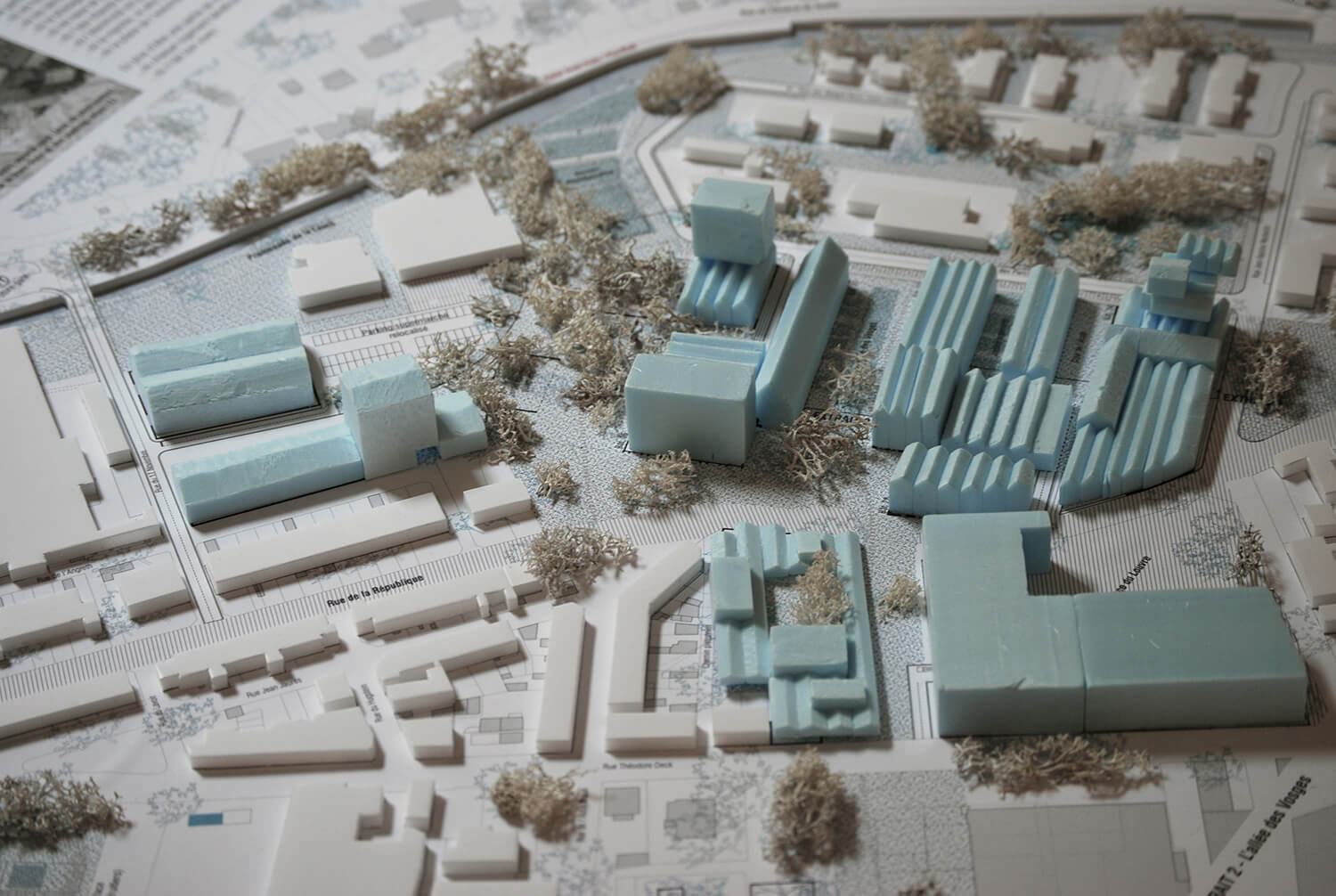




Territory manufacture - Guebwiller case study
location:
Guebwiller
FRANCE
client:
Ville de GUEBWILLER / NSC Schlumberger / Europan FRANCE
year:
2017
program:
masterplan - landscape - public space
status:
competition Europan 14
- mention prize
Guebwiller
FRANCE
client:
Ville de GUEBWILLER / NSC Schlumberger / Europan FRANCE
year:
2017
program:
masterplan - landscape - public space
status:
competition Europan 14
- mention prize
Three quotes guide the project.
First: “it is the whole region that generates the city” (Patrick Geddes), whose reinterpretation seems particularly adapted to Guebwiller and Europan 14: everything in the productivity of a region generates a productive city. Between the plain of Alsace and the Vosges mountains, at the crossroads of the Florival (a river in the Lauch valley that crosses Guebwiller) and the wine route, Guebwiller can indeed mobilize to reconvert its wasteland. A first draft of potential sectors has been proposed, while a real project will be designed to clarify and give structure. Within the project site, these new activities are positioned according to their ability to coexist with housing and equipment. They activate the ground floor, complement existing projects (tertiary/commercial) and allow maximum reuse of existing buildings.
The second, “do not destroy anything before being sure to offer better” (Roland Simounet) guides all proposals at the project site level itself. The intervention is intended to be minimal on existing buildings, with a goal of “100% recycling / reuse / reuse.” It has an urban and territorial aim which seeks to find spaces with urban dimension and increase the pedestrian and landscape connections between the river and the city, and between the high city and the city center. This results in four interventions on the current reality and several strategic choices. Included are: positioning the school in contact with the city center, extending the network of public spaces, having equipment and activities along the street to the city center, creating a real walk along the La Lauch River, a park opening on the river and joining the future tram-train stop.
The third is based on two out of the twelve principles enacted by David Holmgren, co-founder of permaculture: “…do not produce waste (...) intercept and store energy”. These concepts synthesize our approach to the development and operation of this part of the city. What would a part of a city that does not generate waste (even wastewater) look like and what if it produced more energy than it consumes (including gray energy, containing the entire life cycle of materials)?
First: “it is the whole region that generates the city” (Patrick Geddes), whose reinterpretation seems particularly adapted to Guebwiller and Europan 14: everything in the productivity of a region generates a productive city. Between the plain of Alsace and the Vosges mountains, at the crossroads of the Florival (a river in the Lauch valley that crosses Guebwiller) and the wine route, Guebwiller can indeed mobilize to reconvert its wasteland. A first draft of potential sectors has been proposed, while a real project will be designed to clarify and give structure. Within the project site, these new activities are positioned according to their ability to coexist with housing and equipment. They activate the ground floor, complement existing projects (tertiary/commercial) and allow maximum reuse of existing buildings.
The second, “do not destroy anything before being sure to offer better” (Roland Simounet) guides all proposals at the project site level itself. The intervention is intended to be minimal on existing buildings, with a goal of “100% recycling / reuse / reuse.” It has an urban and territorial aim which seeks to find spaces with urban dimension and increase the pedestrian and landscape connections between the river and the city, and between the high city and the city center. This results in four interventions on the current reality and several strategic choices. Included are: positioning the school in contact with the city center, extending the network of public spaces, having equipment and activities along the street to the city center, creating a real walk along the La Lauch River, a park opening on the river and joining the future tram-train stop.
The third is based on two out of the twelve principles enacted by David Holmgren, co-founder of permaculture: “…do not produce waste (...) intercept and store energy”. These concepts synthesize our approach to the development and operation of this part of the city. What would a part of a city that does not generate waste (even wastewater) look like and what if it produced more energy than it consumes (including gray energy, containing the entire life cycle of materials)?





